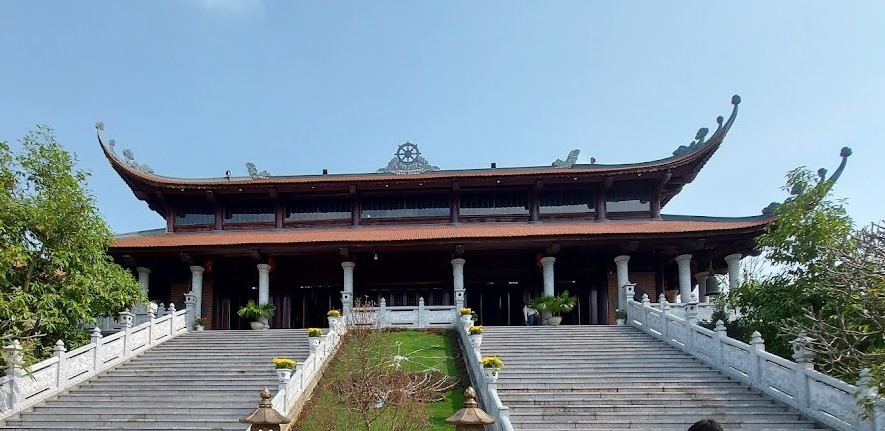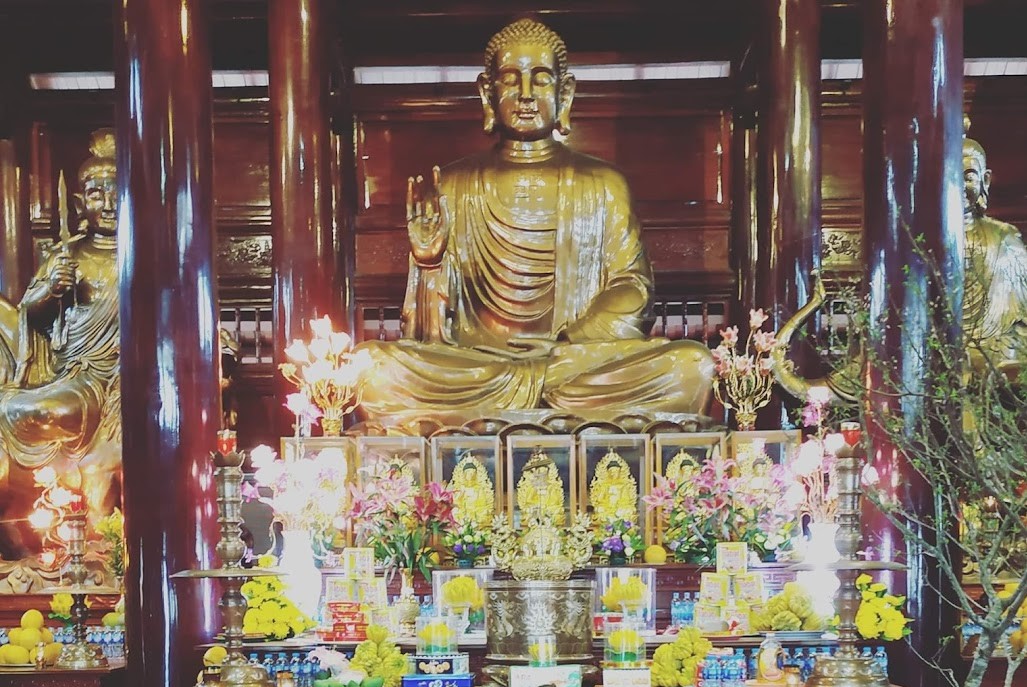Cat Tuong Pagoda
Cát Tường Pagoda is a tranquil and culturally significant Buddhist site located in Tiên Cát Ward, Việt Trì City, Phú Thọ Province. With its peaceful atmosphere and beautiful architecture, the pagoda serves as a spiritual sanctuary for locals and visitors alike. It plays a key role in religious life and offers a quiet space for reflection in the heart of the city.
1. History and Background
Cát Tường Pagoda was built many decades ago, and while not as ancient as some other temples in Vietnam, it holds an important place in the spiritual life of the local community. It was constructed to meet the growing need for a place of worship and Buddhist study in the urban area of Việt Trì.
Over the years, the pagoda has been expanded and restored, especially during the post-war period. Today, it stands as one of the most visited Buddhist sites in the province, especially during festivals and important Buddhist holidays.
2. Architecture and Design
Cát Tường Pagoda reflects traditional Vietnamese Buddhist architecture, blended with some modern elements that make it accessible and welcoming to all visitors.
Key features include:
-
Three-Entrance Gate (Tam Quan): A symbolic gateway into the spiritual world, often decorated with Buddhist symbols and inscriptions.
-
Main Hall (Chánh Điện): Houses statues of Shakyamuni Buddha, Amitabha Buddha, and Avalokiteshvara (Quan Âm), beautifully arranged and surrounded by offerings and lotus motifs.
-
Bell Tower and Drum Tower: Used during ceremonies to call attention to mindfulness and the passage of time.
-
Prayer Courtyard and Garden: A peaceful outdoor space where visitors can sit, walk, and enjoy the natural surroundings.
-
Colorful Flags and Lanterns: Especially during festivals, the temple is decorated with prayer flags and lanterns, creating a festive and spiritual atmosphere.
The architecture is both respectful of tradition and adapted to the needs of modern-day practitioners.
3. Spiritual and Cultural Significance
Cát Tường Pagoda is a vibrant center of Buddhist practice in Việt Trì. It regularly hosts:
-
Daily chanting sessions and Dharma talks
-
Festivals such as Vesak (Buddha’s Birthday) and Vu Lan (Ghost Festival)
-
Meditation retreats and youth activities that teach Buddhist ethics and mindfulness
-
Charity programs, providing food and supplies to those in need in the local community
The pagoda plays an educational and moral role, promoting peace, compassion, and harmony in daily life.
4. Visiting Tips
-
Location: Tiên Cát Ward, Việt Trì City, Phú Thọ Province
-
Opening Hours: 6:00 AM – 6:00 PM
-
Entrance Fee: Free (voluntary donations are appreciated)
-
Dress Code: Respectful clothing is required—no shorts, sleeveless tops, or loud attire
-
Transportation: Easily accessible by car, motorbike, or on foot from central Việt Trì
-
Best Time to Visit: During early morning or Buddhist holidays for a more immersive experience
5. How to Enjoy Your Visit
-
Begin at the Tam Quan Gate, observing the symbolic designs and inscriptions.
-
Visit the Main Hall to offer incense and pay respect to the Buddha.
-
Sit or walk quietly in the courtyard or garden, enjoying the peaceful environment.
-
If visiting during a Buddhist holiday, observe or take part in the chanting ceremonies or lantern lighting events.
-
Speak with the resident monks or local practitioners to learn more about the temple’s history and teachings.
Conclusion
Cát Tường Pagoda may not be the oldest temple in Vietnam, but it is a vital part of the spiritual life of Phú Thọ’s capital city. With its calm setting, beautiful design, and active community, it offers a meaningful experience to all who come seeking peace, prayer, or cultural understanding.



